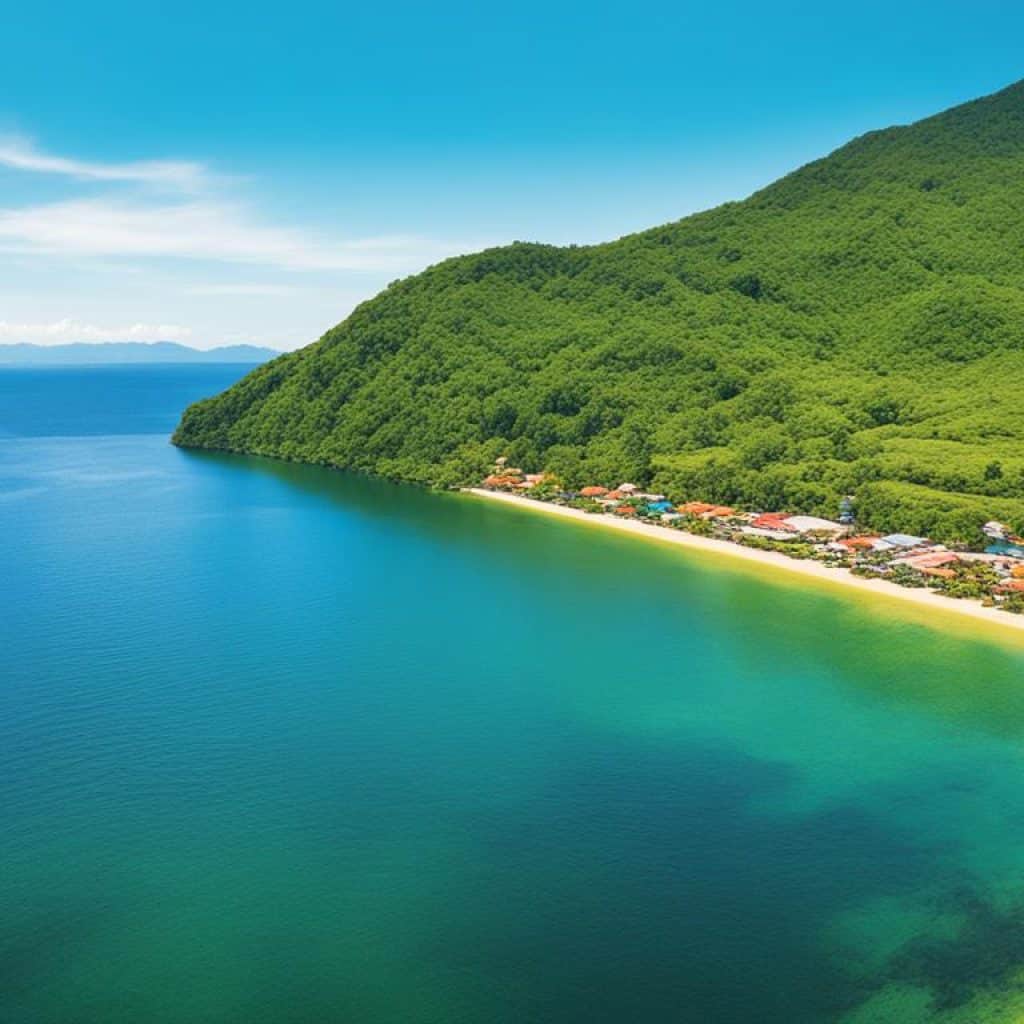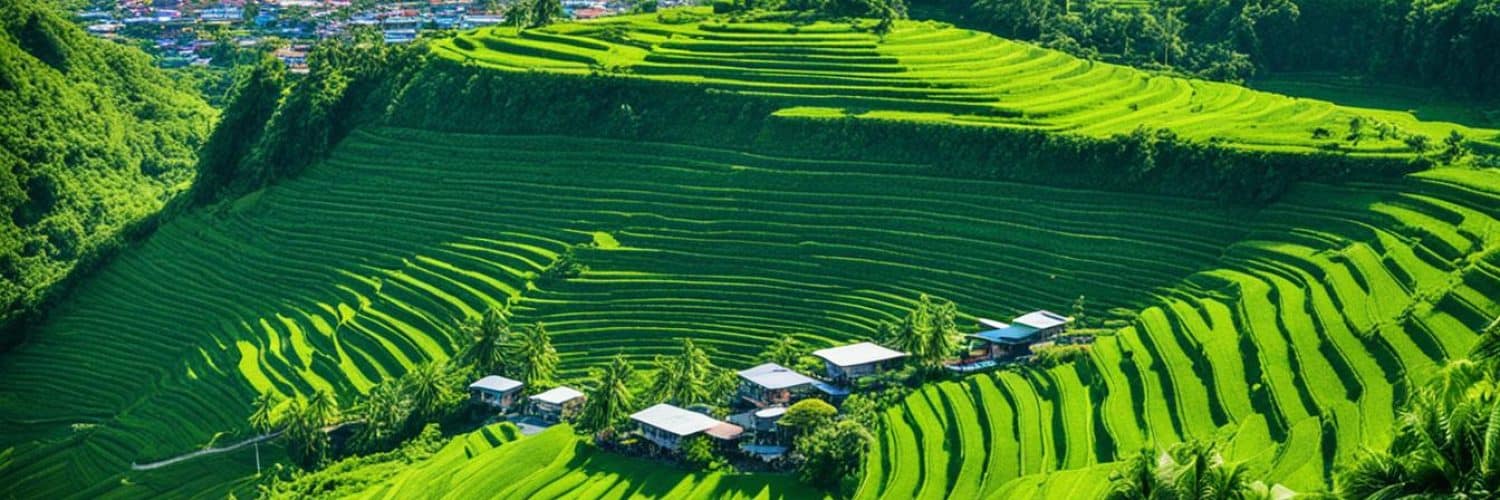Have you ever wondered which province in the Philippines holds the title of being the richest? Is it the bustling metropolis of Metro Manila or the scenic destinations of Palawan? The answer may surprise you, challenging your preconceived notions about wealth in the Philippines. Join us as we unveil the undisputed champion of economic prosperity and delve into the factors that contribute to its success.
Key Takeaways:
- The Philippines is home to several wealthy provinces that play a significant role in driving the country’s economy.
- These provinces boast robust growth, strong industries, and high levels of development, contributing to the overall economic prosperity of the nation.
- Cebu, with its diverse industries and economic hub status, takes the crown as the richest province in the Philippines.
- Other wealthy provinces, such as Batangas, Rizal, Davao de Oro, Bukidnon, Surigao del Norte, and Isabela, also make their mark in contributing to the country’s wealth and development.
- These provinces serve as models for sustainable development and wealth creation, driving economic growth and improving living standards for their residents.
Cebu – The Economic Powerhouse
Cebu, a wealthy province in the Philippines, holds the distinction of being the richest province in the country, with an estimated economic value of P208,271,460,000. Known for its diverse industries and thriving economy, Cebu has cemented its position as an economic hub in the region.
One of the key contributors to Cebu’s economic success is its robust tourism sector. The province is home to various attractions, from pristine beaches to historical landmarks, offering visitors a rich cultural experience. Moreover, Cebu serves as a gateway to other popular destinations in the central Philippines, further boosting its tourism-driven economy.
In addition to tourism, Cebu has established itself as a manufacturing powerhouse. The province has a strong manufacturing sector, particularly in electronics and furniture production. Its skilled workforce and strategic location make it an attractive destination for local and foreign investors seeking manufacturing opportunities.
Furthermore, Cebu has emerged as a prominent player in the business process outsourcing (BPO) industry. The province’s capital, Cebu City, serves as a major BPO hub, attracting numerous global companies and providing employment opportunities to its residents. This thriving BPO sector has not only contributed to Cebu’s economic growth but also to its reputation as an outsourcing destination of choice.
In summary, Cebu’s wealth and economic prosperity can be attributed to its flourishing tourism sector, strong manufacturing industry, and thriving BPO sector. By leveraging its natural and human resources, Cebu continues to drive economic growth, create employment opportunities, and establish itself as a prominent economic powerhouse in the Philippines.
Batangas – Strategic Location and Natural Resources
Batangas is a wealthy province in the Philippines, known for its strategic location and abundant natural resources. With an economic value of P21,856,260,000, it has become an attractive destination for investment and economic growth.
The province’s manufacturing sector plays a key role in driving its economy. Batangas is home to various industrial parks and economic zones that attract companies engaged in petrochemicals, food processing, and automotive manufacturing. This vibrant manufacturing industry contributes significantly to the province’s economic prosperity.
Furthermore, Batangas is known for its vast array of natural resources. These resources include rich deposits of minerals, limestone, and fertile agricultural lands. The province’s strategic location also makes it an ideal hub for trade and commerce.
In addition to its manufacturing sector and natural resources, Batangas is home to several power plants. These power plants, including natural gas and renewable energy facilities, contribute substantially to the country’s energy supply.
But it’s not just the economic aspects that make Batangas special. The province’s picturesque coastlines and beautiful landscapes have turned it into a popular tourist destination. Visitors are attracted to its stunning beaches, diving spots, and scenic mountains, making tourism another crucial contributor to Batangas’ economy.

Overall, Batangas’ strategic location, rich natural resources, thriving manufacturing sector, renewable energy infrastructure, and tourism offerings position the province as a significant powerhouse in the Philippine economy.
Rizal – Proximity to Metro Manila and Diverse Industries
Rizal, located near Metro Manila, has emerged as a wealthy province in the Philippines with an economic value of P20,979,600,000. Its strategic location and close proximity to the country’s capital have contributed to its economic growth and development.
Rizal is known for its diverse industries, including manufacturing, agriculture, and services. The province has a strong manufacturing sector, particularly in electronics, garments, and food processing. This sector plays a vital role in driving the province’s economic output and providing employment opportunities for its residents. In addition, Rizal’s agricultural productivity, mainly in rice and vegetable farming, further contributes to its economic prosperity.
The services sector in Rizal, which includes retail, banking, and hospitality, has also experienced significant growth. The province’s proximity to Metro Manila has attracted various businesses, leading to the development of commercial centers and the expansion of service-oriented industries. This growth has not only created job opportunities but also improved the overall quality of life for the province’s residents.
Rizal’s strategic location and diverse industries make it an attractive destination for both businesses and individuals. Its close proximity to Metro Manila enables easy access to the national capital’s resources and markets. Moreover, the province’s wealth creation and economic growth contribute to the overall development of the Philippines, ensuring a thriving and prosperous future.
Key Industries in Rizal
| Industry | Contribution to Economy |
|---|---|
| Manufacturing | A major player in electronics, garments, and food processing |
| Agriculture | Significant productivity in rice and vegetable farming |
| Services | Growth in retail, banking, and hospitality sectors |
Davao de Oro – Rich Natural Resources and Diversification Efforts
Davao de Oro, formerly known as Compostela Valley, is a province in the Davao Region that boasts an economic value of P18,750,900,000. The province’s economic success can be attributed to its abundance of natural resources, specifically in mining and agriculture. Davao de Oro is blessed with significant deposits of gold, copper, and other valuable minerals, which fuel its thriving mining industry and generate substantial revenue.
Moreover, Davao de Oro is a major producer of essential crops such as bananas, rice, corn, and coconuts, contributing significantly to its agricultural sector. The fertile soil and favorable climate make the province an ideal location for agricultural activities, ensuring a stable food supply and agricultural economic growth.
In recent years, Davao de Oro has been proactive in diversifying its economy and attracting investments in various sectors, including tourism. The province prides itself on its scenic landscapes and eco-tourism destinations, promising a remarkable experience for nature enthusiasts and adventure seekers alike.
To support its economic growth and development, Davao de Oro is also making notable efforts to improve its infrastructure and connectivity. These initiatives aim to enhance transportation systems, enable seamless logistics, and create a more conducive business environment for investors.

With its rich natural resources, diversification efforts, and commitment to infrastructure development, Davao de Oro is poised for continued economic growth and prosperity.
Bukidnon – Agriculture and Emerging Industries
Bukidnon, located in the Northern Mindanao region, is a wealthy province in the Philippines with an economic value of P16,732,620,000. Known as the “Food Basket of Mindanao,” Bukidnon boasts extensive agricultural lands and a favorable climate for crop cultivation. The province excels in producing high-value crops such as pineapple, coffee, sugarcane, corn, and various fruits and vegetables. Additionally, Bukidnon has a thriving livestock industry, particularly in cattle farming.
This province has also embraced emerging industries, including renewable energy and tourism. Bukidnon has immense hydroelectric power potential, with several hydroelectric power plants operating within its territory, providing clean and sustainable energy for its residents. Furthermore, the province’s natural landscapes, featuring majestic mountains, cascading waterfalls, and captivating natural parks, attract tourists from far and wide, contributing to its economy.
Efforts to enhance infrastructure, promote investment, and develop human capital continue to drive economic growth and improve the standard of living in Bukidnon.
Agricultural Production in Bukidnon
Bukidnon’s agricultural sector plays a vital role in the province’s economy, contributing significantly to its wealth creation and economic growth. Let’s take a look at some key agricultural statistics:
| Crop | Production |
|---|---|
| Pineapple | 200,000 tons |
| Coffee | 4,000 tons |
| Sugarcane | 100,000 tons |
| Corn | 500,000 tons |
Bukidnon’s agricultural success not only ensures food security but also provides opportunities for employment, income generation, and sustainable development in rural areas.
Surigao del Norte – Abundant Natural Resources
Surigao del Norte, located in the Caraga Region, is a province in the Philippines with an economic value of P13,195,740,000. This province is renowned for its vast reserves of natural resources, particularly in the field of mining. With significant deposits of precious minerals such as gold and copper, Surigao del Norte has established a thriving mining industry that contributes significantly to its economic output.
The province of Surigao del Norte is not only blessed with ample mineral resources but also benefits from its breathtaking coastal areas. Its pristine beaches and dive spots have become popular tourist attractions, drawing visitors from far and wide. In addition to its mining sector, tourism plays a vital role in the economy of Surigao del Norte, bolstering its overall wealth and development.

This image showcases the stunning natural beauty of Surigao del Norte, highlighting its coastal allure that beckons tourists to explore its shores.
Isabela – Queen Province of the North
Isabela, known as the Queen Province of the North, is a wealthy province in the Philippines. With total assets worth $790 million, it ranks among the richest provinces in the country. Isabela is primarily an agricultural province, known for its rice and corn production. It is considered the Rice Bowl of the North and the top corn producer in the Philippines. The province’s fertile land and favorable climate contribute to its agricultural productivity and economic success. Isabela has diversified its economy in recent years, with trade centers in cities like Ilagan, Cauayan, Santiago, and Roxas. These cities have experienced rapid economic growth, attracting investments and further contributing to Isabela’s overall wealth.
Isabela’s agricultural sector is the backbone of its economy. The province is known for its vast rice fields, which contribute significantly to the country’s rice production. Isabela’s favorable climate and abundant water resources make it an ideal location for rice cultivation. The province’s commitment to modern farming techniques and its strong agricultural infrastructure have enhanced its rice production capabilities.
“Isabela’s rice production plays a vital role in ensuring food security for the Philippines. The province’s commitment to agricultural excellence has made it a leading contributor to the national rice supply.”
In addition to rice, Isabela is a major corn producer in the Philippines. The province’s fertile soil and suitable climate create favorable conditions for corn cultivation. Isabela’s corn production is not only crucial for food supply but also for feedstock in the livestock and poultry industries. The province’s corn farms employ modern techniques and emphasize sustainable practices, ensuring high-quality yields year after year.
Agricultural Production in Isabela
Isabela’s agricultural sector contributes significantly to the province’s economic growth and development. Here is a table showcasing the rice and corn production statistics for Isabela:
| Crop | Annual Production (in metric tons) |
|---|---|
| Rice | 1,137,336 |
| Corn | 1,076,038 |
Table: Rice and Corn Production in Isabela (Source: Department of Agriculture)
Isabela’s agricultural prowess, especially in rice and corn production, has not only contributed to the province’s economic success but also to the overall food security of the Philippines. The dedication and expertise of Isabela’s farmers have made the province a shining example of sustainable agriculture and rural development.
Conclusion
The richest provinces in the Philippines, including Cebu, Batangas, Rizal, Davao de Oro, Bukidnon, Isabela, and Surigao del Norte, have become beacons of economic prosperity and sustainable development. These provinces have harnessed their strategic location, abundant natural resources, and diverse industries to create wealth and drive their respective economies.
Their success stories underscore the importance of strategic planning, investment, and a conducive business environment in fostering economic growth. These provinces have leveraged their assets to attract investments and create opportunities for their residents, resulting in improved living standards and increased earning potential.
Moreover, these provinces have exhibited a commitment to sustainable development by prioritizing tourism, renewable energy, and diverse sectors, reducing their reliance on a single industry. This approach not only ensures resilience but also contributes to the overall economic growth and stability of the country.
The success of these provinces serves as an inspiration for other regions in the Philippines to learn from and replicate. By emulating their strategies and adopting a forward-thinking approach, other provinces have the potential to unlock their own economic prosperity and become contributors to the nation’s wealth creation and sustainable development.


















Add comment